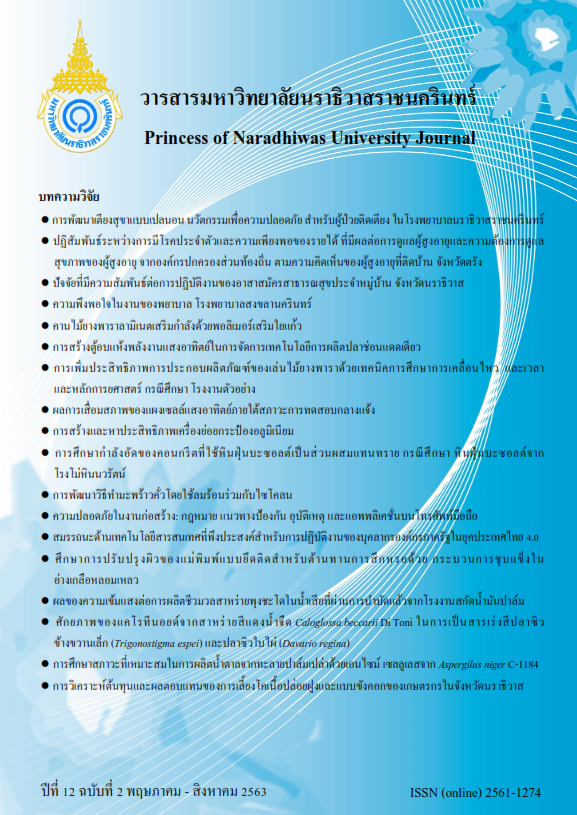Study on Surface Improvement of the Fixed Mold for Wear Resistance by Salt Bath Nitrocarburizing Hardening Process
Keywords:
Fertilizer mold, Steel, Wear, Process hardeningAbstract
This research aims to study on surface improvement of the fixed mold for wear resistance by salt bath nitrocarburizing hardening process. It’s to improve the properties of the mold surface to become more stiffness to be suitable for pelletizing of organic fertilizer. This research was conducted using 12 pieces of mold and divided into 3 groups as follows: 1. The mold has not been hardened amount 4 pieces. 2. The mold was hardened by salt bath nitrocarburizing hardening process with temperature 580 degree Celsius, 4 pieces of hardening time 180 minutes and 4 pieces of 300 minutes. The hardness depth measurement of specimen by using vickers hardness tester which the hardness depth measurement for every 0.01 millimeters, amount 12 points. The specimen has highest surface hardness at distances 0.01 millimeters. It takes time for hardening 180 minutes and 300 minutes which it has hardness 580 HV and 590 HV respectively. Each mold must to pass the pelletizing of organic fertilizer about 5 tons for test wear of mold. The results showed that the mold has not been hardened, there is abrasion wear caused by the metal surface friction. Mold that has not been hardened with a wear rate of 0.68 millimeters and the mold that has been hardened by salt bath nitrocarburizing hardening process that takes time to harden 180 and 300 minutes with a wear rate of 0.28 mm. and 0.23 mm. respectively.
References
Carvajala, L et al. (2017) Monitoring Heat Treatments in Steels by a Non Destructive Ultrasonic Method. Materials Researc
Ismail, N.M.et al. (2016) The Effect of Heat Treatment on the Hardness and Impact Properties of Medium Carbon Steel. IOP Conf. Series: Materials Science and Engineering
Kumar, A.et al. (2016) Heat Treatment Parameter Optimization Using Taguchi Technique. International Journal of Scientific Research and Education. 4(10) Properties of Medium Carbon Steel, Journal of Minerals and Materials Characterization and Engineering, 11(2) : 143-152
Purwaningrum, Y et al. (2018) Heat Treatment, Mechanical Properties and Microstructure of T-Joint Steel Arc Welded. Applied Mechanics and Materials Submitted. 876 : 36-40
Ratnui, S (2006) Introduction to lubrication engineering. King Mongkut’s Institute of Technology North Bangkok. (In Thai).
Tolouei-rad, M & Lichter, E (2016) The Heat Treatment Analysis of E100 Case Hardening Steel”. Journal of Engineering Science and Technology 11,(3) : 407 – 415.
Sasanarakit, S (2006) Production technology and prototype factory produce high quality organic fertilizer. 1st edition. Samut Prakan: Printing Company Limited, Fertilizer Technology Center, Research institute Science and Technology of Thailand (TISTR). (In Thai).
Sathirachinda, M (2553) Iron plating engineering 2nd Edition.Bangkok: Chulalongkorn Printing Factory. (In Thai).
Senthilkumar, T & Ajiboye, T. K. (2012) Effect of Heat Treatment Processes on the Mechanical
Zhou, M et al. (2017) Bainitic Transformation and Properties of Low Carbon Carbide-Free Bainitic Steels with Cr Addition. Metals



